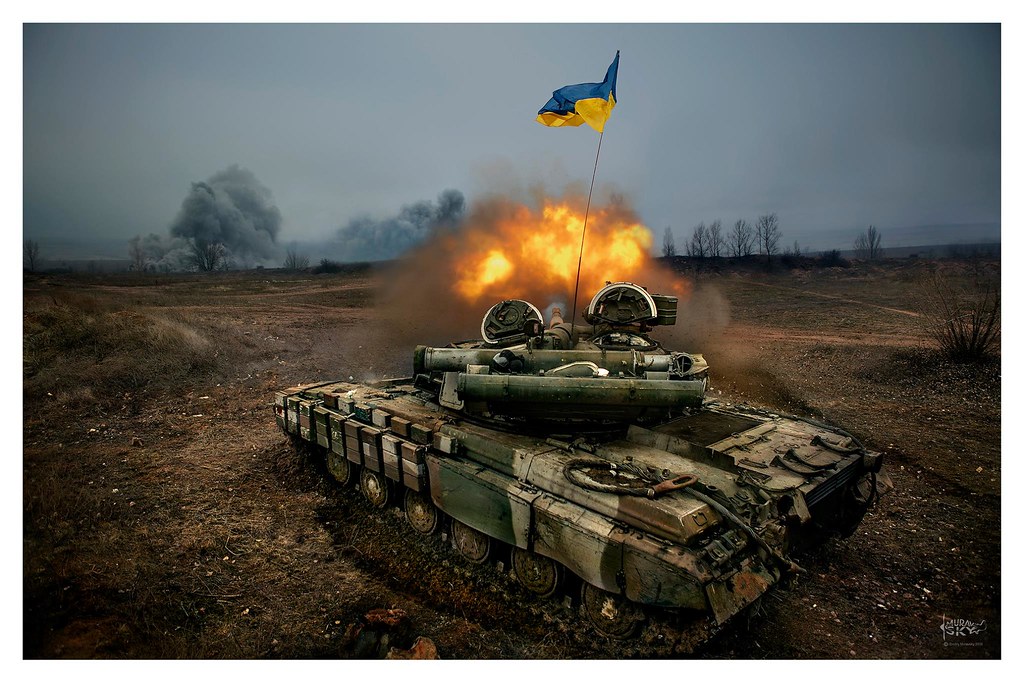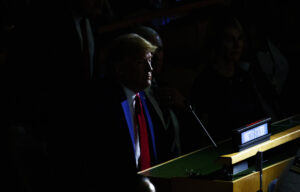Russia’s Decision to Invade Ukraine and Theories of International Relations
This article looks at only two specific sets of international relations theories, with the aim of explaining what led to the 2022 Russian invasion of Ukraine.

Image Credit: Ministry of Defense of Ukraine
Disclaimer: This article was written on March 7, 2022. Russia’s invasion of Ukraine is an ongoing conflict and this article may not reflect the most recent updates.
As the Russian invasion of Ukraine ensues, the differing schools of international relations (IR) and their proponents, have begun to hotly debate the causes of Moscow’s aggression. This began when the Russian Foreign Ministry shared a 2014 article by John J. Mearsheimer, which blamed the West for Russia’s annexation of Crimea and the larger Ukraine crisis. This was followed by Mearsheimer restating his older position in a recent interview to the New Yorker. The interview unleashed a paradigm war of sorts, among differing stripes of IR scholars regarding the inherent causes of the Russia-Ukraine war.
It is safe to say that this academic debate is not going to be settled anytime in the near future. Nevertheless it presents us with an opportunity to review some of the theories of IR and see if there are any common threads running through them. The breadth and width of these theories makes it impossible for any such review to be a comprehensive exercise. One could potentially fill an entire library by books looking at the seemingly innocuous question: “what causes war?”
Thus, the following article looks at only two specific sets of theories, with the aim of explaining what led Russia to invade Ukraine. The first set can be categorized as Russia-specific theories, which are not unique to Russian state behavior, but have been recently presented to explain Moscow’s motives in Ukraine. The second set comprises a couple of relatively recent books on great power politics and system-level analysis, that seek to explain the strategies of a dominant and rising power with respect to each other.
Let’s begin by looking at some of the literature that has recently been used by scholars to explain Russia’s decision to invade and more broadly its assertive policies in the neighborhood since 2014. This analytical essay by Elias Gotz helps us break-down these different theories into four categories: decision-maker level, domestic politics-centric, national identity and status-seeking, and geopolitical/security-centric.
The decision-maker level theories stress that it is Putin’s personal worldview that drives Russian foreign policy.
First, the decision-maker level theories stress that it is Putin’s personal worldview that drives Russian foreign policy. The crux of this argument is its implicit suggestion that if a different leader were to rule Moscow right now, the country would have radically different external policies. Hence, this is often also the underlying assumption of policies that seek to achieve regime change in Russia.
Second, the proponents of the domestic politics-centric theories, contend that Russia’s war initiation in Ukraine was a means to divert attention from the abject failure of Putin’s government. This was especially the case following Western sanctions since 2014. Another version of this view – succinctly argued here by Maria Popova and Oxana Shevel – is that the Russian political elite have been threatened by the advent of “color revolutions” in its neighborhood. Therefore, it was the prospect of a very different political system (in Ukraine) on Russia’s doorstep that prompted Moscow to invade.
Third, the quest for status by a former superpower, has been used as an explanation for Russia’s actions in Ukraine. The larger argument here is that since the end of the Cold War – and through NATO’s eastward expansion – Moscow lost some of its key veto powers in Europe, especially with respect to the continent’s security architecture. According to this paper by Andrej Krickovic and Chang Zhang, declining powers are more likely to initiate confrontations than rising powers for status-recognition. Many see Russia as a declining power, and this explains Moscow’s aggression in Ukraine.
The national identity arguments tend to look at historical narratives and how their use by political actors generates specific foreign policy decisions. “History and culture matter, not because they determine state behavior in any mechanical way, but because they provide a reservoir of social and verbal practices out of which states’ goals, purposes, and self-understandings are constructed,” writes Ted Hopf. Precisely such a historical narrative regarding Ukraine being a core aspect of the Russian neighborhood led many scholars back in the 1990s to predict that Ukraine’s democratic progression could result in conflict. Last year President Vladimir Putin himself made this case in a much-talked about essay.
Fourth, most recent theoretical arguments can be placed within the very broad security and geopolitical category. Let’s begin with Mearsheimer’s idea of “offensive realism”. In a nutshell, his argument is that regional spheres of influence are a primary condition for great power peace, and NATO’s expansion into former Soviet-Baltic states in 2004 upended that. The key here, as pointed out by Paul Poast, is that Russia was too weak in 2004 to stop NATO’s expansion. But when the question of the alliance’s expansion into Georgia and Ukraine came up in 2008, Moscow did indeed draw a red-line. Unlike 2004, today Russia has enough power to try to secure its regional objectives.
The rampant military aid and supplies from the West to Ukraine since 2014 can be seen as an act accentuating Ukraine’s security dilemma vis-a-vis Russia.
Another foundational theory is the idea of the “security dilemma” developed by Robert Jervis. This argues that a state’s quest for more security ends up making its adversary less secure, who in turn also makes additional investments in its own security – unleashing a spiral. The rampant military aid and supplies from the West to Ukraine since 2014 can be seen as an act accentuating Ukraine’s security dilemma vis-a-vis Russia. More specifically, as Charles Glaser argues in this landmark paper, one of the mechanisms through which the security dilemma works is by increasing the value the adversary places on expanding its territory. This is what we might be witnessing here as well. Very presciently Glaser wrote back in 1997, “(In) the current debate over NATO expansion … opponents argue that even though expansion into Central Europe would increase NATO’s military capability, it would also increase Russian insecurity and therefore make Russian invasion of its neighbors more likely.”
Among many other theories, two others also deserve to be mentioned here. First, as argued here by Andres Gannon et al, Moscow had been involved in a “low-intensity conflict” in Eastern Ukraine – through Russian-backed separatists – since 2014. However, given that that conflict had resulted in a stalemate over the past couple of years, Moscow had to escalate to more conventional conflict to achieve its motives. Second, the concept of a “protracted conflict” developed by Michael Brecher provides us with a helpful lens to situate the larger Russia-Ukraine conflict. Brecher defines a protracted conflict as one which sees two states having experienced at least ten years of rivalry and a minimum of three episodes of interstate violence. And there are six variables that result in conflict resolution/termination, which include ‘exhaustion’, ‘domestic pressures’, ‘external pressures’, ‘changes in capability balance’, ‘reduction in discordant objectives’, and ‘decline in conflict sustaining acts’. Data suggests that most protracted conflicts are never resolved.
All of these theories would struggle to explain Russia’s recent behavior just by themselves, according to Gotz. Recommending analytical eclecticism, he builds a multilayered framework which tries to explain Russia’s assertive policies through an interplay of the various aforementioned causes.
Now having looked at the Russia-centric explanations, we should briefly consider two relatively recent books on great power rivalry, which help shed light on Russia’s decision to invade Ukraine. But before we can turn to these books, it is useful to consider Michael Kofman and Andrea Kendall-Taylor’s article, which challenges the idea of Russian decline. Considering the transformation of Russian power since 1991, it is more appropriate to classify Russia as a rising power and not a declining one.
Orders of Exclusion by Kyle M. Lascurettes argues that world orders are essentially constructed to exclude a rival by the dominant powers. This “ordering to exclude” takes shape when the dominant powers see their opponents as both military and ideological threats. NATO’s 2004 expansion by the West can be seen as such an exercise in order building, with the explicit aim of excluding Russia.
The next book, Rising Titans, Falling Giants by Joshua Shifrinson, argues that a rising power decides to prey on a declining one, when it is convinced that the declining one: a) doesn’t have sufficient military power to fight back and b) it sees no value in the declining power with its future hope of balancing other adversaries. Accordingly, one can see how Russia (a rising power) might have been convinced of the European Union’s (EU) decline and the lack of its utility in balancing against the US. And this is what eventually drove Russia’s decision to prey on Ukraine, a probable future member of the EU and NATO.
Considering the arguments in both these books, it becomes obvious that both the decision to build an order to exclude Russia and Moscow’s decision to prey, did not sufficiently consider their opponents ability to respond, which has now resulted in an escalatory spiral.
Srijan Shukla is pursuing a Master’s in International Relations at New York University. He studied Political Science and Economics at McGill University. He subsequently worked as a foreign affairs reporter for ThePrint.





A well researched article throwing light on the reasons behind the ongoing Russia-Ukraine conflict. With the globalization that the world has seen in the last 3 decades, inter-dependence between the nations has increased immensely. Therefore whatever may be the cause of this war, fact is that the entire world will have to bear the consequences. That Russia today is one of the 3 top oil producers in the world, the wounds this war inflicts will take a much longer time to heal, not only for the hapless Ukrainians but for the entire mankind.
Excellent article. The author has wonderfully analysed the issue and explained it in its correct perspective for everyone to understand it’s ramifications . Enjoyed reading it
This is indeed a comprehensive write up that has briefly covered the various reasons, theories that can be considered as to have lead to Russia’s invasion of Ukraine. In a autocratic State like Russia wherein Putin has unbridled powers the reason of invasion has to have an element of the decision maker theory, national identity . Also most importantly the threat to its own Security and World power status with the NATO moving Eastwards and Ukraine inching towards joining the NATO influenced the act of Invasion.
The Russian invasion of Ukraine is puzzling, to say the least. That is why it has given rise to a medley of conflicting opinions.
Srijan Shukla, in his superbly researched Article, has tried to dispel some of the myths and the mist that shroud this cataclysmic event; in an objective and balanced manner.
A conflict in Ukraine was not wholly unexpected.
In his seminal Paper of 1993 – The Clash of Civilizations, Samuel Huntington had refuted Francis Fukuyama’s claim of “The End of History”. Huntington had hypothised that “cleft” States and countries on faultlines would continue to engage in hostile actions and minor conflicts, short of all out war. Huntington went on to explain how Ukraine is a cleft State and a potential conflict zone and predicted this crisis.
What he said 30 odd years ago holds good today. Ukraine is divided internally along historical, geographic and religious lines between Europe and Orthodox Russia. He warned about the dangers of the Ukrainian situation and predicted that Ukraine “could split along its fault line into two separate entities, the eastern of which would merge with Russia.”
But strategists had theorised that the conflict would originate within Ukraine, between the Eastern and Western halves: with the West and Russia supporting their respective client state. But an all-out invasion by Russia was an unexpected twist.
And a hot debate has ensued, with different schools of IR scholars battling, with varied vested interests and agendas. But when a war begins and is fought; deep inside the mind of an autocratic leader, logic and analysis are the first casualties.
Shukla has written a fine Article which cuts through the fog of this war. It gives an incisive perspective to educate both the layman and the armchair strategist without deciding for us. Finally, it’s up to you and me to conclude what Putin and the West want and how they intend to pursue their respective Aims.
Brigadier Ajit Nair (Retired)
A well researched article. Enjoyed reading it. Rather enlightening. Putin did try his best convincing the US, NATO and EU his fears of Ukraine joining NATO and a threat next door. Ultimately Ukraine has to accept neutrality to servive. A buffer zone is essential.
Congratulations to the author for an in depth analysis
well thought scholarly article. sheds a lot of light in the ongoing invasion. History repeats itself, a leaders personality and character traits plays a major role too
Thanks for such enriching document
Excellent analysis.